Visions of the Aztec afterlife are far more sophisticated than is often assumed.
By chance or by fate, circumstances we ourselves have erected during life, provide for us a scenario for what’s to come. A non-place, beyond a geographical and temporal earth; perhaps this is the best we can do at describing it. Octavio Paz would later say “tell me how you die and I will tell you who you are.”
Faced with this enigma, at times we’ve found that we’re not intuitive enough to recognize what we’ve called a destination. An interesting prehispanic worldview assigns a name to this “non-place” and to part of the trip that we take as walkers in timelessness, once we’ve rid ourselves of this materiality.
One of the most resonant of philosophical unknowns, the subject of death asks about a future, afterlife. Where will one stop (if one is indeed going somewhere) after death? The metaphor extends further as we approach an Aztec worldview or indeed an Aztec afterlife. Life, in the Aztec estimation, is disjointed into no less than four separate places.
For the Mexica people, geography was guarded similarly by four deities. Interestingly, a number of elements based in this same prehispanic vision, act as portals to these other worlds. Water, caves or holes in the ground, and then mountain peaks and those of hills, air and fire. We can understand more of each of these spaces by understanding that the way in which one dies can affect the destination one ends up in.
The Abode of the Dead

In the Aztec world, it was easy to divide the world into three dimensions: heaven, earth, and the underworld. Heaven is the realm of gods, humans have earth and the underworld belongs to the dead. Based on the studies of Patrick Johansson, the four destinations recognized in Aztec reality were: Mictlán or “place of the dead” where Mictlantecuhtli ruled as “the lord of death”; Tlalocan “place of Tlaloc”; Tonatiuhichan, “the house of the sun” and home to Huitzilopochtli. The fourth is Cincalco “house of corn,” ruled by Huemac.
Mictlánn
Mictlán is the underworld to which most of the dead are destined. A legend, sometimes called the Myth of the Thirteen Heavens (Mito de los trece cielos), held that in Mictlán alone are no less than nine underworlds. All those who’ve died natural deaths, or from illness or an accident not endowed with sacredness, end up here. It’s probably the most difficult of territories, timeless as it is. And the journey is long and includes a series of dangerous obstacles. Recognizing that for the Aztecs, the total decomposition of the body represents the time it takes for the deceased to reach thi ultimate end point, in Mictlán.
According to the myth, death here is a series of mysteries; fear, discord, the grave, ashes, dreams and the deities of the desert. In the first stage, the deceased catches sight of a river, the Apanohuacalhuiados, which can only be crossed with the help of a dog. It’s essential that, in life, the deceased had not mistreated any dogs, for here, they’ll remain forever wandering, and unable to ever cross the river which is guarded by a species of iguana or lizard called Xochitonal. The dead here are said to mourn and repent forever.
A second scenario is played out in the mountains where the dead are expected to face all manner of obstacles in crossing them. A third takes place amid winds of obsidian, wherein lies Itztlacoliuhqui, a god of punishments. This place, called Itzehecáyan, is so broad that it’s home to two different domains. A first is frozen with eight hills of sharp cutting stones where snow is continually following. The god of wind, Mictlecayotl, resides here. The second domain is completely deserted, a badlands devoid even of gravity. The dead who manage to get to this point must overcome immensely strong winds even as they are immersed in nothingness.
A further scenario involves arrows cast by invisible hands. Another is a wasteland in which wild beasts consume the very hearts of the dead. Toward the end of the journey, the mouth of the river Apanohuacalhuia, leads to an eighth and final stage of death. Here, the black waters are inhabited by the giant iguana, Xochitonal. Here the dead, and the heartless debate their fates in the squalor of the water. To go even further, the dead must at last cross an enormous valley with nine more very deep rivers. These streams are actually reminiscent of the nine states of consciousness. A final level involves the judgment of Mictlán. In this deepest of darknesses, the dead reflect on each of the nine states of consciousness, and the judgment will eventually evaluate their actions while alive. Legend has it that once these nine stages are passed, the god Mictlantecuhtli will allow the dead to make an act of contrition.
Tlalocan

Tlalocan is a space guarded by Tlaloc and his assistants. Their primary ppurpose is in tending to the dead who’ve died due to lightning strikes, those who’ve drowned or died of some water-related disease, including kidney diseases. These unfortunates are dragged by Chalchiuhtlicue, a duality of Tlaloc, but Tlalocan is something of a paradise of springs and crisscrossing rivers, complete with maize, beans, chia and fruit trees, in a scene of perpetual delight and joy. Bernardino de Sahagún related that in this garden of delights, the soul passed to an existence of games and rest beneath the trees in the company of merry men and all sorts of delicacies. It’s also said that the people who get to Tlalocan are chosen by the tlaloque (priests) while still alive, and thus not just anyone can reach this level of higher consciousness.
Tonatiuhichan

Tonatiuhichan is a state reached by those who’ve died at war or for certain blood sacrifices. Warrior women, those who die in childbirth are also considered for this destination. But having reached this threshold, the dead come face to face with Tonatiuh, the sun itself, and its unique luminescence; a brightness that disintegrates even the shadows. The greatest glory for those inhabiting Tonatiuhichan is the opportunity to accompany the “sun king” in his flight across the sky. It’s said that men become birds here, including hummingbirds, or some other beautifully plumed creatures, and they take to flitting about, feeding on the nectar of flowers, in these the gardens of the house of the sun.
Cincalco
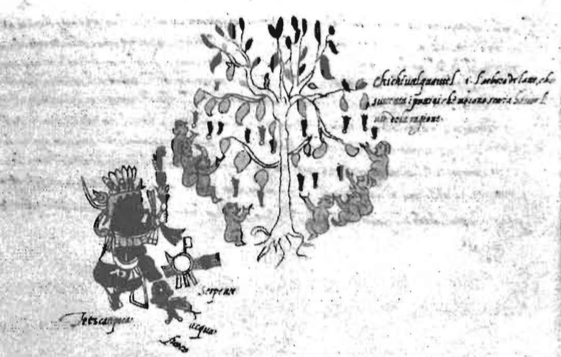
Lastly is an abode for the innocent; the souls of children, infants, and newborns. Cincalco is the home of Cinteotl and Chicomecóatl, the gods of maize. Children were often buried with farming implements, indicating that their souls were closely related to corn and the cultivation of corn. Men who willingly gave their lives to give new strength to corn, those with suicidal natures, and thus, those who understood the ultimate fate of everyone might also be interred thus. Another version of the myth suggests that the entrance to Cincalco was linked to a portal of the underworld located in the Cerro de Chapultepec, where Moctezuma himself apparently contemplated suicide a few years before the arrival of the Spanish conquest.
/ Photographs: Principal: Steven Lilley – Flickr / Creative Commons;
2) perceptions (off) – Flickr Creative Commons; 3) Jaen Madrid for MXCity;
4) Creative Commons Flickr Rafa Win; 5) Nikos Koutoulas – Flickr Creative Commons
ILUMINA is an interactive sculpture of light and sound fed by the collective energy of people’s hearts.
Art and technology are two faces of human creativity, two that are also closely related, despite the differences they apparently have with each other. What art does on many occasions has been achieved thanks to a specific technical development, a technology whose existence allows the artists to enhance or limit their creative work. Yes, it conditions it, but possibly also encourages it to transcend those limitations.
In this sense, the relationship between one and another human activities could be found in virtually any era, but it is certainly in recent times when technology has a presence, so persistent, somehow so inescapable, that art has been benefited for incorporating it. Both as a resource, an instrument, as part of the examination of contemporary reality, when many of our practices and interactions almost necessarily pass through a technological device.
Thus, somehow the ideal professed by Nietzsche on the need to transform life in a work of art, but this time through art and technology. Somehow the aesthetic sensibility, the discovery of the admirable or the frankly beautiful that any of us can perceive, finds a vehicle, a means of transmission and expression in how art can be magnified through technology.
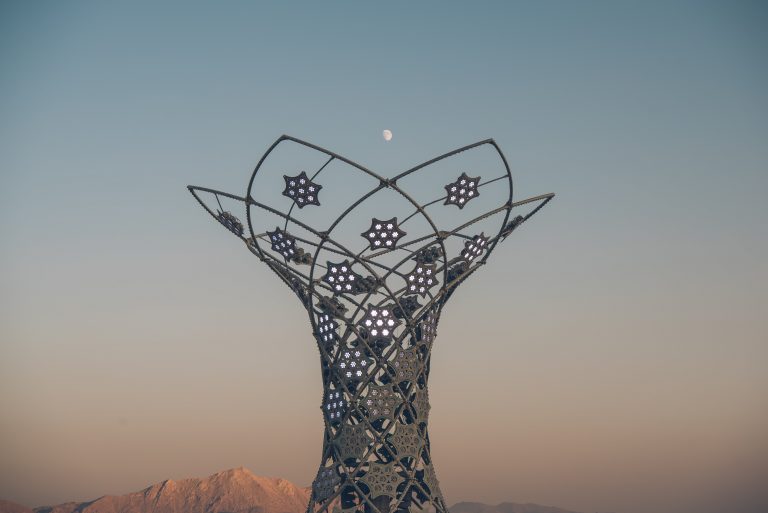

Nowadays, it is becoming more and more complex to achieve high levels of consciousness, and to create a community without being outside of technology, but ww can use it as a tool to improve our sensitive abilities. To the same extent that we depend on technology to survive, it has become part of our lives, even in its most spiritual and even transcendental recesses. Art, now more than ever, demands to be a vehicle to explore different states that bring us closer to the dimensions of the infinite
Ilumina is an installation created by the artist Pablo Gonzalez Vargas, who through a deep exploration with the power of interconnectivity, proposes a method to improve the energy field of the planet. Pablo Gonzalez created a majestic interactive sculpture of light and sound that is activated by the emotional states of people, generating a beautiful light show and a sound landscape where the participants enter a state of coherence and deep harmony with themselves and with each other.
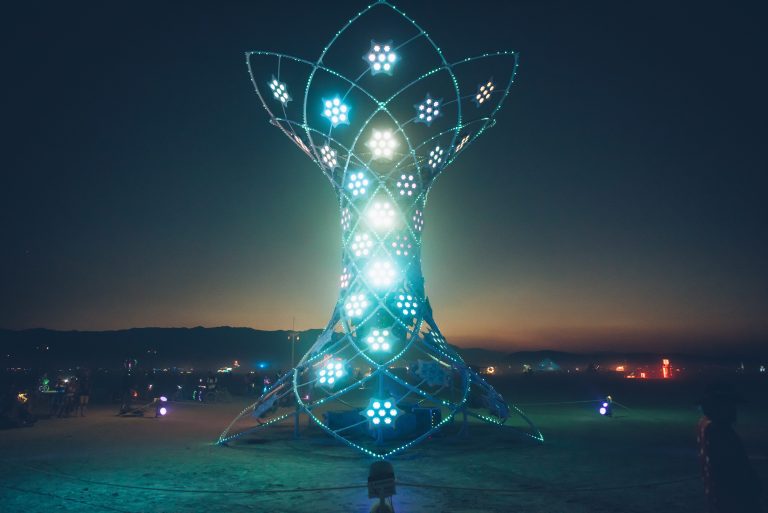

Ilumina is a metallic art monument, completed with aluminum and LED lights that together form an architectural piece full of harmony. The piece of art combines technology with a design of ancient wisdom. Ilumina has a program that responds to external stimuli, being able to shine more while more “coherent” is the group that hosts, generating a unique shared experience.
Ilumina is a chilling visual experience, and the volunteers who participate in the exercise of meditative immersion that lasts three minutes, are transported to a state of coherence and deep harmony with themselves, with their fellow participants and with the cosmos through a patented fusion of modern technology and transpersonal art.
The biometric sensors are connected to the ear lobes of each participant, which measures their unique state of coherence and averages them together. This is how lighting design and moving soundscapes respond to a unique algorithm, a product of HeartMath that uses biometric sensors for personal self-training in the regulation of emotional states where the sculpture becomes brighter to the extent that the users experiment with their emotions.
The team that created Ilumina included about 20 people from different disciplines and contributions. There was a large industrial design team that shaped the exact model that was taken to manufacturing. Marco Kalach worked with an expert manufacturing workshop, because as it is a public use facility in particular events, it had to comply with all the rules, structural regulations and with protection codes. The executive producer of the project was Gaby Vargas, who was responsible for the expertise at HeartMath, and joined by mexican musicians and audio engineers to make the experience of 360 degrees of immersive sound, led by Billy Mendez. The lighting team, directed by Paolo Montiel, coordinated all the programming and lighting design that makes symbiosis with the audio.
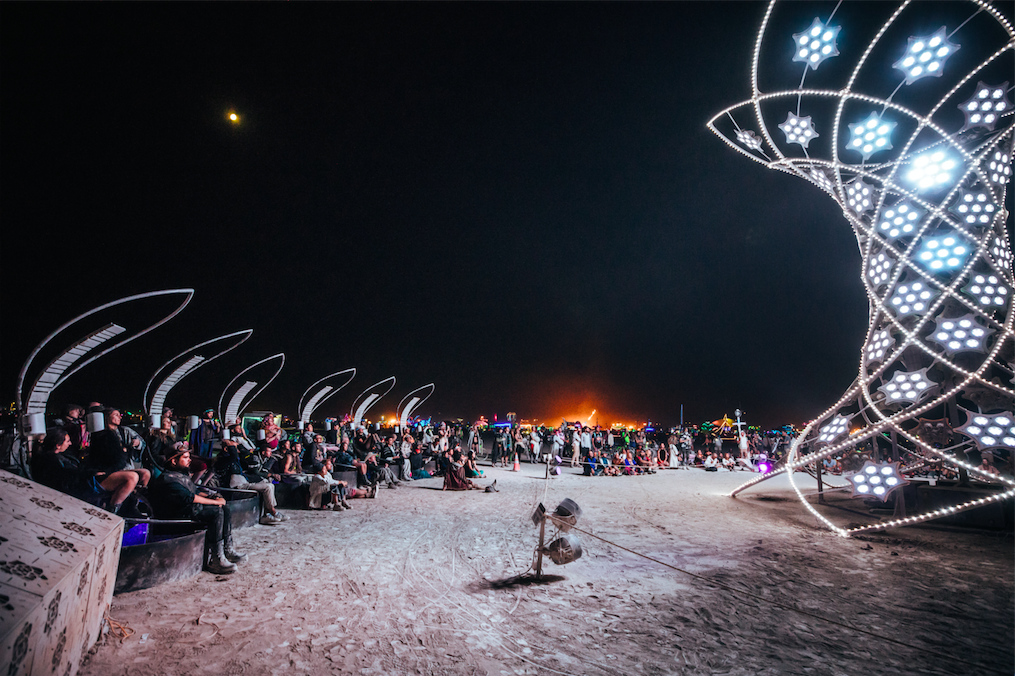
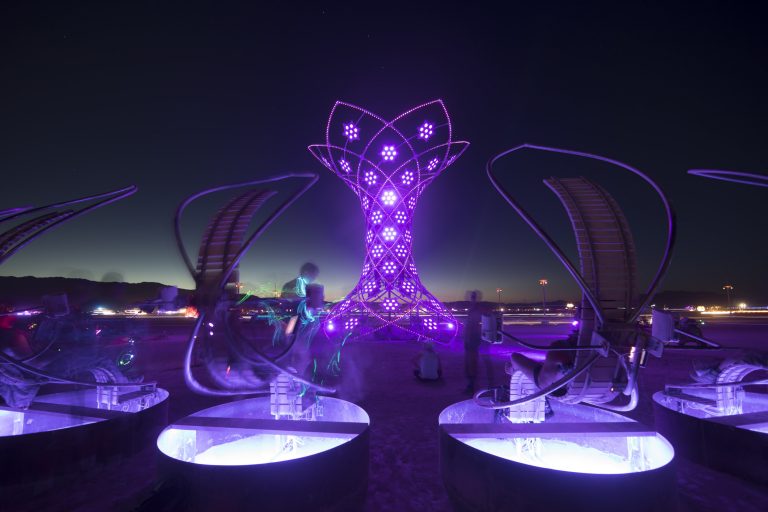
It was at Burning Man 2012, where Pablo Gonzalez Vargas created an art car called Mayan Warrior: a luminescence project and a spectacular audio show featuring pieces by the artist Alex Gray and musical performances by elite artists from Mexico and around the world.
In the penultimate edition of Burning Man, Pablo Gonzalez and his team decided to go a step beyond the great proposal that is Mayan Warrior, by presenting Ilumina, this piece of sacred geometry that radiates not only light but an algorithmic sacrality, it’s as mystical and hypnotic as an art piece can get. The tower of almost 12 meters high illuminated the Nevada desert at the Burning Man Festival 2017, and users managed to enter a mental state full of concentration characterized by a complete absorption, a wonderful moment of loss of the notion of spacetime.
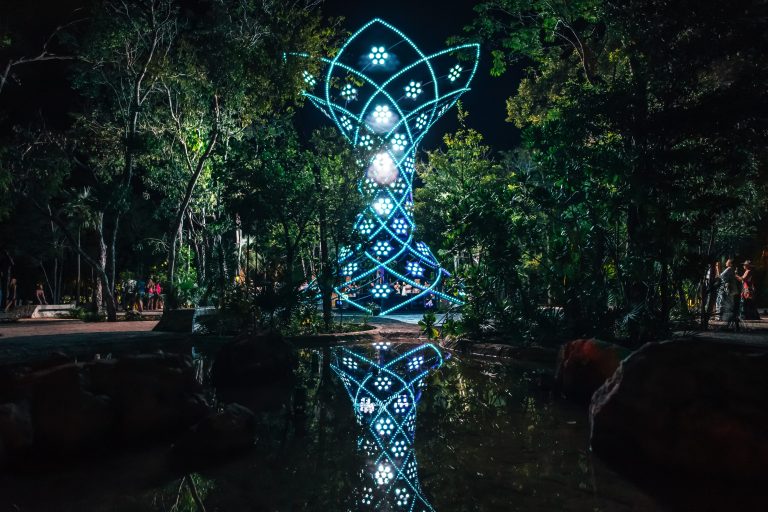
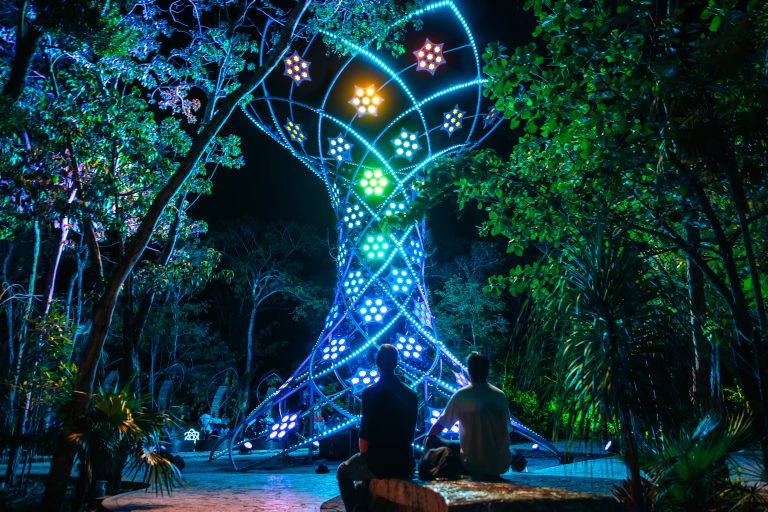
It is expected that later there will be replicas of these sculptures, so that they can reach new locations around the world, and we can experience this amazing spectacle of light and the soundscape that connects us with the profound mysticism that exists in ourselves and that highlights the interconnectivity of our planet with the global energy fields.
Here are some photos of this beautiful project, in which lies the probability of a coherent and luminous future that would be worth living.

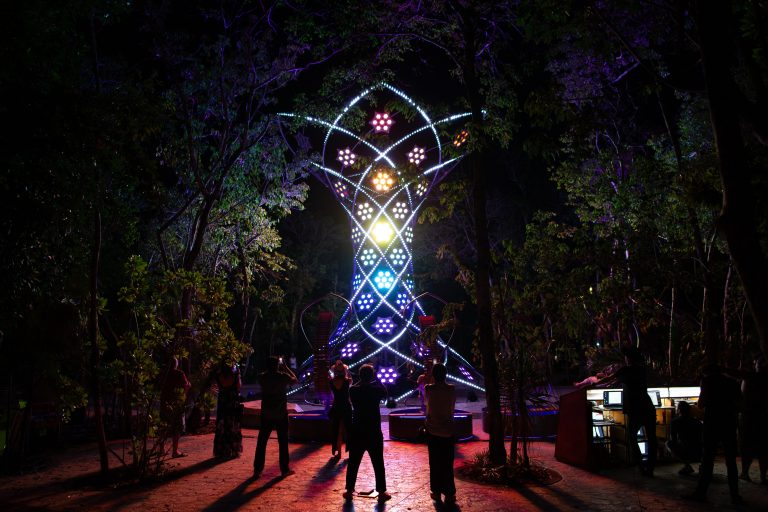

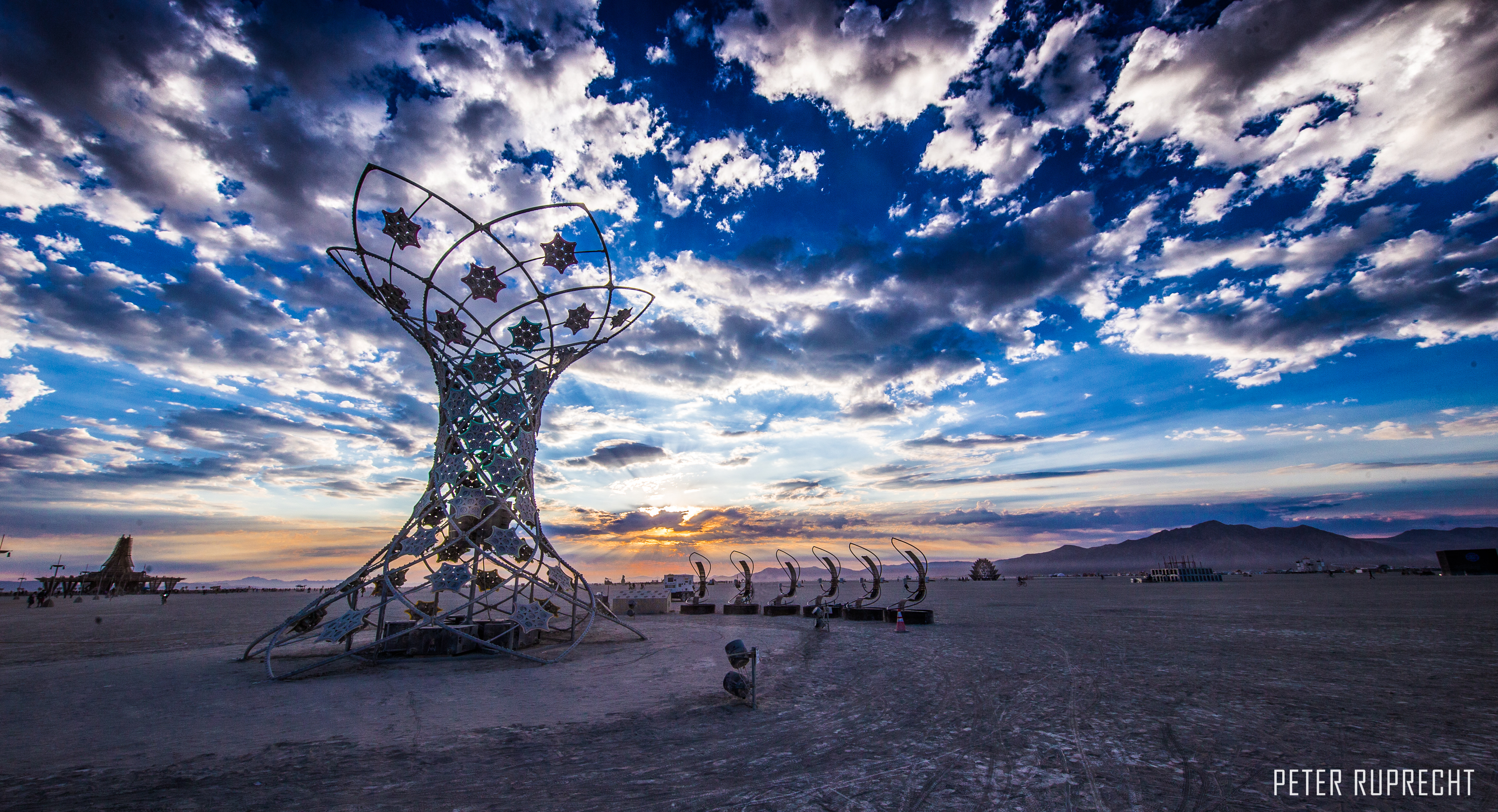
If you want to know more about this beautiful project or about the creative artist and allies that integrate it, visit their social media channels:
Ilumina Art Installation
Sitio web // Facebook // Instagram
Chilangos may cherish their reputation for never reading, but Mexico City libraries present a very contrary picture.
Though the internet makes lots more information available to lots more people, Mexico City libraries have simply not been supplanted. Charged with continually re-inventing themselves, and their places in the public imagination, one can still encounter eras gone by and great historical minds in a library as in few other places.
Knowledge, after all, belongs to everyone. Opening a book, reading it at a study, or just meeting in the silence of one these Mexico City libraries enhances concentration, and provides a welcome respite from everything going on out there in the world.
Of all Mexico City libraries, the oldest were part of the church and one or another of its offshoot organizations. Among these was the Colegio de Santa Cruz de Tlatelolco, founded in the 1530s and surviving today as the Biblioteca José María Lafragua. Most of these ecclesiastical libraries were not truly open to the public, and Mexico had to wait for the National Library of Mexico, inaugurated by Benito Juárez in 1867 to enjoy the benefits of a truly public library system.
The list below is intended to let you enjoy some of that system, too.
José Vasconcelos Library
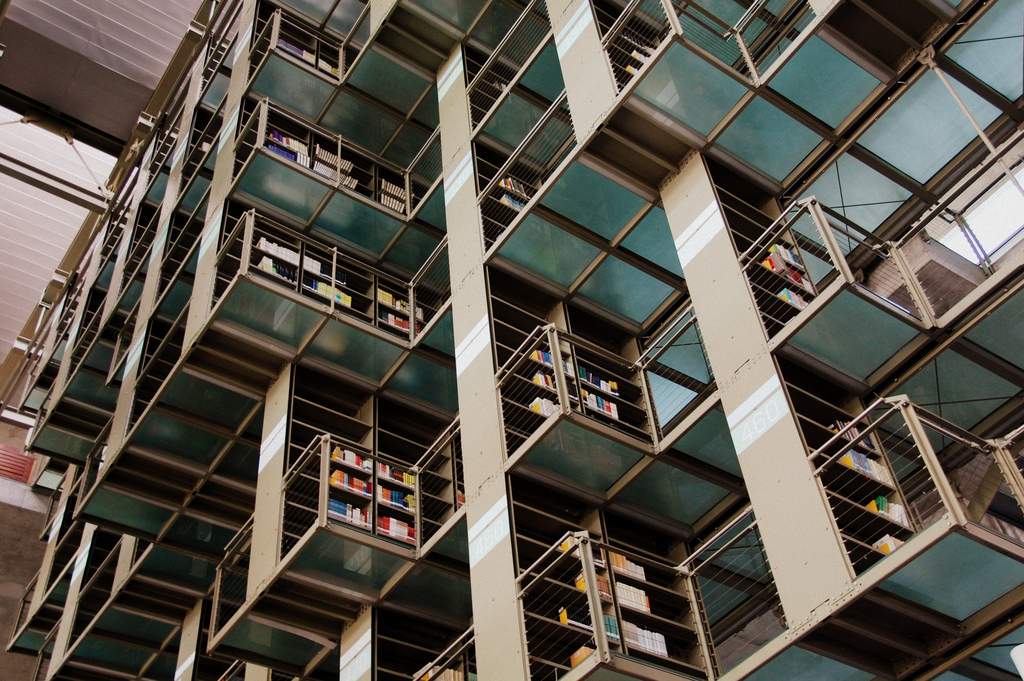
Opened just ten years ago, in 2006, the Vasconcelos is visited by thousands for the sheer spectacle of its innovative design. Graced by the iconic whale from artist, Gabriel Orozco, it’s always a good library for art and visual spectacle. The facade retains something of a colonial appearance, but for sheer scale, and jaw-dropping space, the interior must be experienced.
Address: Eje 1 Norte Mosqueta S / N, Buenavista
Website
UNAM Central Library
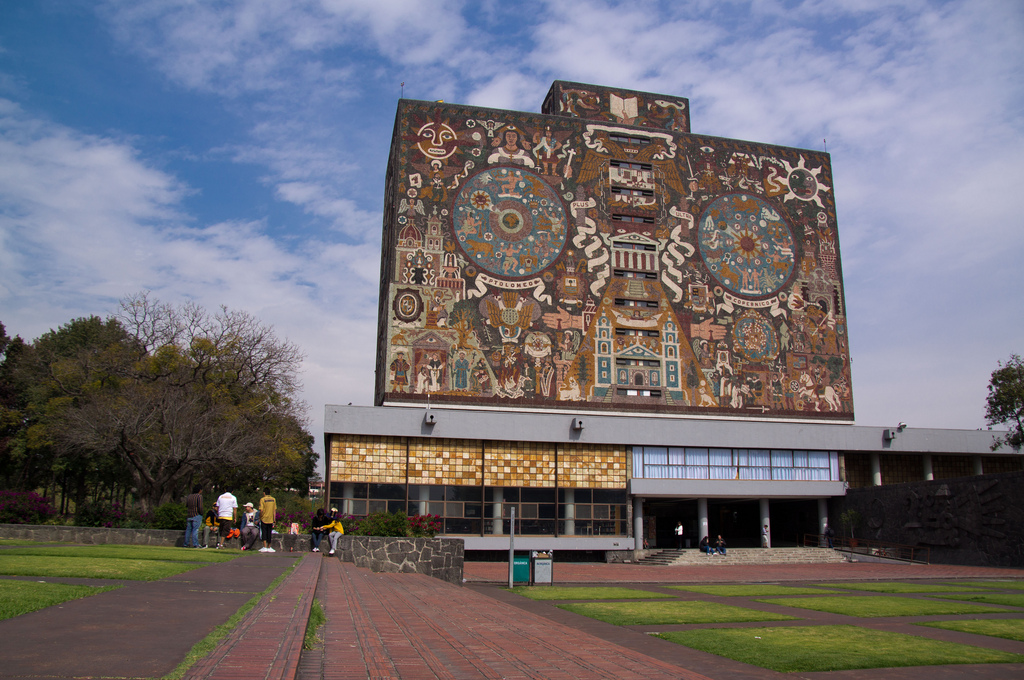
We’ve written a lot about it in these pages, but the UNAM library with the Juan O’Gorman murals remains one of the most outstanding of all Mexico City libraries. As a UNESCO site with some 428,000 volumes in the collection, it’s the biggest in Mexico, but lots of folks visit just to see the facade and the surrounding grounds.
Address: Circuito Interior S / N, Coyoacán, Ciudad Universitaria
Website
National Library of Mexico
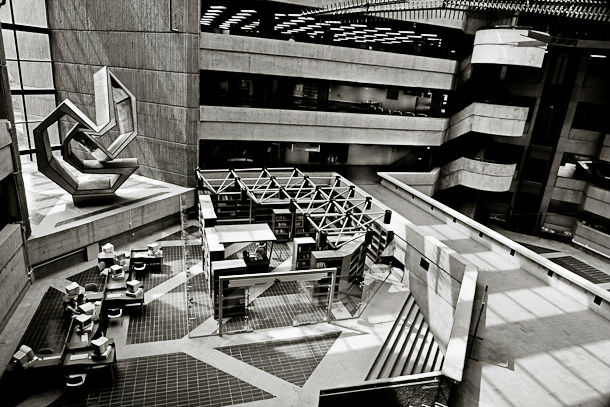
Opened by Benito Juárez in 1867, there’s still a good one million books inside, today administered by the folks from UNAM. Originally located in the San Agustín church in the city center, the current building was opened in 1979. Geometric, and massive, it’s an extraordinary place to visit.
Address: Av. Universidad 3000, Coyocacan
Website
Miguel Lerdo de Tejada Library
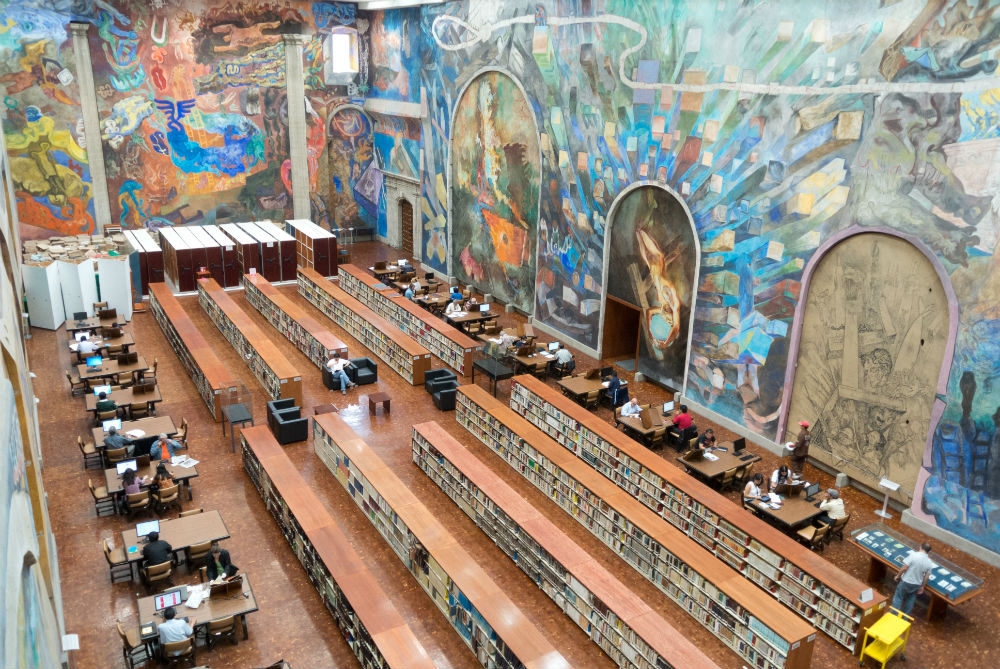
Specializing in economic materials, this collection of some 86,350 books and 114,852 journals is administered by the Secretary of Finance and Public Credit. Founded in 1928, it’s one of the cities true public art spectacles. Inside the main nave of the old Oratory of San Felipe Neri “El Nuevo,” the baroque façade outside is just the beginning. Inside, the murals are futuristic, and not to be missed.
Address: Av. República de el Salvador 49, Centro Histórico, col. Centro Histórico
Library of Congress of the Union
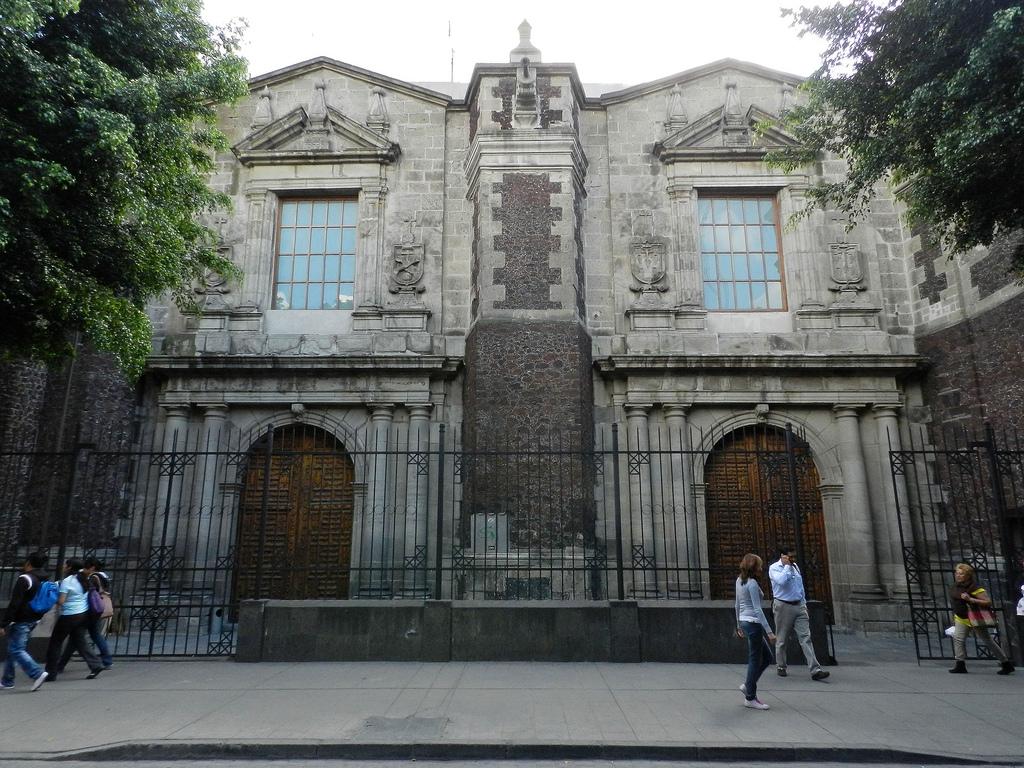
One of Centro’s truly outstanding historical buildings, for centuries it was the convent of the Clarisas from the 16th century. Today it’s something like a “Library of Congress” with a stunning collection of publications and artifacts, but also with a lush, deep, dark intellectual interior, that beckons from centuries past.
Address: Tacuba 29, Centro Histórico
Photographs this page: Flickr – Creative Commons




